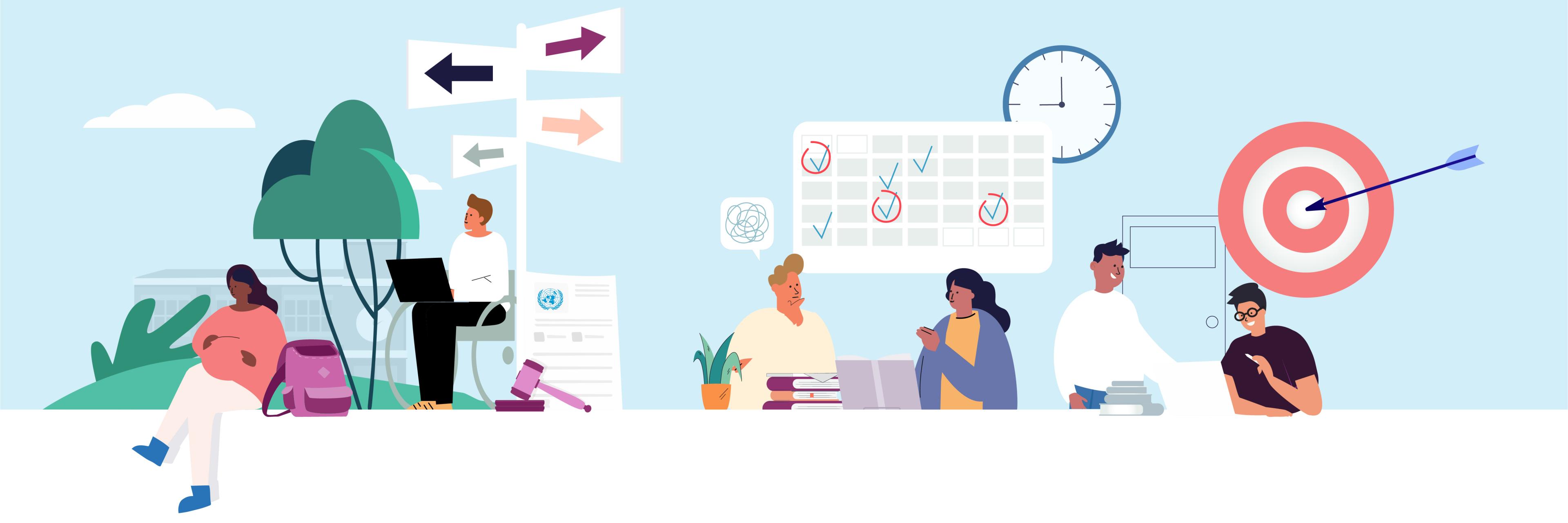
Mindfulness for calm and relaxation
Mindfulness is a training that teaches you to consciously live in the present. It helps you find more peace and relaxation by focusing your attention on what is happening in the present moment. This may sound woolly at first, but there is increasing scientific evidence that mindfulness is effective. If you are interested, you can take a mindfulness training course. But you can also get started yourself with simple exercises to discover if mindfulness is for you. In addition, we provide tips and links to other interesting exercises and trainings.
Mindfulness can also help you accept and confront problems or complaints. It helps you to approach problems in a different way, to prevent these problems from playing a major role in your life. You gain control over your problems or complaints by actually accepting them and 'letting them be', instead of trying to frantically control them. Mindfulness can therefore help you well with psychological problems and even with a lot of brooding. It teaches you to deal with this better.
(Source: MIND)
Exercises Mindfulness
In this exercise, you sit on a chair or lie on, say, the floor, with your eyes closed or lowered. You focus your attention on your breathing. Notice how the air goes in and out of your body and feel the sensations associated with it. The most important thing is to observe your breathing without trying to change it. It is normal for your thoughts to wander; if that happens, calmly bring your attention back to your breathing without judging yourself for it. Whatever you feel during the exercise, be it calmness, stillness, sadness or irritation, may just happen. Notice that these feelings come and go. After about a minute, open your eyes and take in your surroundings again. You can finish the exercise by taking two deep breaths in through your nose and out through your mouth, if that helps you.
(This exercise is from the book: Mindfulness; A practical guide to finding peace in a hectic world. Mark Williams and Danny Penman, 2011).
Mindfulness means being mindful in the moment, even when you are busy. Here are four short exercises that can help you. You can do them separately or sequentially as one exercise. It is best to sit or lie down for a while in a quiet environment, with your eyes closed if you are comfortable.
Paying attention to your breathing
Concentrate on your breathing. Don't change anything, just notice how you breathe in and out. If your attention wanders, that's normal. Just bring your attention back to your breathing.
Attention to your thoughts and feelings
Observe your thoughts and feelings without judging. Take an interest in what is happening in your mind and then let it go. Think of thoughts as clouds drifting by, some dark and annoying. That's okay because they eventually pass.
Attention to your senses
Consciously notice what your senses are telling you. Taste, look, feel and listen to the world around you. Do this as if you are experiencing everything for the first time.
Paying attention to your body
Consciously feel your body. Move from your feet to your head and notice how each part of your body feels. Do you feel tension, relaxation, pain or discomfort? Observe everything without wanting to change anything. This exercise is also called 'body scan'. It helps you get in touch with your body and relax.
More tips and mindfulness exercises
Are you interested in getting started with mindfulness? Below you will find an overview with links to exercises and trainings. There are also links to find a mindfulness trainer or training in your area.
- Psychology Magazine offers an online mindfulness training that teaches you how to better cope with stress, gloomy feelings and hectic everyday life.
- soChicken wrote a helpful article: 4 simple mindfulness exercises I use.
- Listen to this body scan from Mindful Minute and focus on your body. You will start noticing from moment to moment what you experience and feel in your body.
- Be guided by these Mindfulness meditation exercises by Rob Brandsma on Spotify.
- For a mindfulness trainer or training in your area, check out the webpage of the Vereniging Mindfulness Based Trainers Nederland (VMBN) or the page of the Verenging Voor Mindfulness (VVM).
- Download the Insight Timer app for Apple or Android for various meditations, breathing exercises and explanations about mindfulness. Among other things, you can also keep a diary and join the community to talk to people around the world or meditate together. With a free membership, you can already do quite a lot.
Need advice or help?
MIND Korrelatie is here for you. Get in touch (anonymously) with one of the staff at the MIND Korrelatie helpline. You can call, chat, WhatsAppen or e-mail one of their psychologists or social workers. You can call on 0900-1450. You can call on weekdays from 9am - 9pm. For chat, WhatsApp en e-mail, visit the website www.mindkorrelatie.nl.